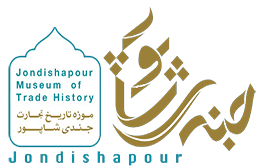The metalworking of Persia prospered during the Sassanid Era. Silver was used so frequently during this period. Based on their diverse applications and shapes, vessels of Sassanid era are categorized into different groups such as frames, bowls, round cups, boat-shape cups with flat rims or scallops, jars and chalices. Another common vessel of this period was rhytons made in various shapes such as heads of horses and heads of ghazels. The other popular vessels of this period included goblets made in different shapes such as horses with saddles and bridles, busts of kings, and golden hanging ornaments. These objects allude to the noticeable progress of metalworking during the Sassanid era.
Metalworking was so prosperous during the Sassanid era. Two methods were used to make metal objects of the Sassanid era namely lost-wax casting and hammering on cold metal sheets using convex molds.
Designs used on the silver vessels of the Sassanid era indicate that they were used for formal receptions. The main design used on silver vessels of the Sassanid age was the picture of the king.
Like the reliefs of the Sassanid era, cups of this period were made to show off. Since these cups were made in royal workshops, they showcased the glory of the king. In the designs places on royal metals, the king always wears a crown and even on informal occasions such as hunting and private life, he is depicted as wearing a crown. Decorative designs on metals of the Sassanid era are categorized into four main groups namely silver plates, jars and bottles decorated with pictures of women, hemispheric bowls decorated with ordinary life events and vessels decorated with various animal and plant designs.
Islamic period
The art of Iranian metalworking continued during the Islamic period and turned into one of the most prominent and lasting arts of the Islamic world in the course of a couple of centuries. This traditional art not only followed the overall principles of the Islamic art, but also retained the spirit of Iranian art within itself that was based on Iranian designs and decorations.
Transformation and development of Iranian metalworking art from the advent of Islam to the invasion of Mongols are categorized into three periods as explained below.
The first period began in the early centuries of establishment of the Islamic government in Iran, that is, the establishment of the Umayyad dynasty and ran to the late 9th century. This period can be called the age of continuity and re-identification. During this period, the metalworking traditions, in terms of decoration styles and manufacturing techniques, follow methods used during the Sassanid era. One of the most important metalworking method used in this period is called Abbasid Method. The prominent feature of this method or style is using the same Sassanid decorations in minor and comparative techniques while some little modifications are practiced. These features are clearly visible in artifacts, metalwork and textiles made or woven in the 8th and 9th centuries.
The second period began in the late 9th century and ran to the late 11th century. Considering the decorative designs and materials and methods of manufacturing metals, this period can be called the age of deployment of the new style. Prior to this age, the Abbasid dynasty was so powerful and had managed to deploy its rulers and governors across the country and control them as a centralized political power. However, it gradually declined during this period and was seriously challenged by local governments and newly-established dynasties such as the Buyid dynasty (932-1062 A.D.) and the Samanid dynasty. Consequently, the capital of the Abbasids, Baghdad, that functioned as the hub of arts and benefited from Iranian traditions due to its proximity to the capital of the Sassanid dynasty, Ctesiphon, lost its centrality and it was replaced with other cities as the hubs of arts since these cities were supported by new independent governments and their rulers. As a result, some new styles emerged that took their names from the names of different cities and regions. The noticeable characteristic of the second period was emergence of new regional styles and this period is identified as an intermediary stage connecting the first period to the third period which was the prosperity era for the metalworking art.
The third period ran from the 11th to the 13th centuries when Mongolians invaded Iran. For the most part of this period, the Seljuk dynasty ruled Iran (1038-1194 A.D.) and it was considered as the pinnacle of prosperity of the metalworking art in Iran. A specific style of metalworking called the Seljuk Method emerged during this period which was an independent and particular style of metalworking that was created under the support of Seljuk kings and rulers. Some distinctive features of this style of metalworking included the glory, size and strength of metalwork, making use of living animals as imitations from the nature, and embossed decorations and shapes.

